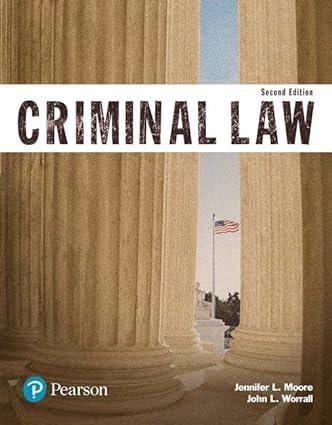We relate the evidence in the light most favorable to the Commonwealth. On the day of the
Question:
We relate the evidence in the light most favorable to the Commonwealth. On the day of the incident, the sixty-six year old victim went to an apartment building that she owned. Her purpose was to collect rents due her. There she saw a man, later identified from an array of photographs as the defendant (identification was not a live issue at trial), descending an exterior staircase of the building. The defendant was accompanied by a dog on a leash that was wrapped around his hand “very tightly by his side.” As the victim and the defendant stood several feet apart from each other, she asked him whether he resided in the building. The defendant responded that he did not. At this time, the dog was standing by the defendant and was calm and well-behaved. The victim, admittedly “upset,” then accused the defendant of allowing the dog to leave his droppings on the flat roof and yard of her building. The defendant then became agitated and denied that his dog was responsible for the alleged droppings.
As the victim then began to walk away from the defendant and the dog, she heard him speak a “short phrase” to the dog “[i]n a stern voice,” and saw him partially release or unravel the leash while still holding it. As the defendant did so, the dog immediately lunged at the victim and bit her hand. The victim and the defendant, with his dog in tow, then fled the scene. The victim received medical attention (stitches, antibiotics, and tetanus and rabies shots) for the wound that caused her nerve damage.
Discussion. A dog can be a dangerous weapon. “A dangerous weapon is ‘any instrument or instrumentality so constructed or so used as to be likely to produce death or great bodily harm.’ Commonwealth v. Farrell, 322 Mass. 606, 614-615 (1948). There can be little doubt that a dog . . . used for the purpose of intimidation or attack falls within this definition.” Commonwealth v. Tarrant, 2 Mass.App.Ct. 483, 486 (1974). The defendant does not argue to the contrary.
Rather, he claims that he was entitled to a required finding of not guilty because the Commonwealth failed to show that the dog had been trained to attack, what the “stern words” used by the defendant were, or that the dog had been manipulated by the defendant to attack the victim. In short, he argues that the Commonwealth failed to show that the dog did not act of its own volition or that its actions were brought about through his reckless conduct.
We conclude that the Commonwealth’s evidence was sufficient to allow the jury reasonably to infer that once the conversation between the defendant and the victim turned from casual to confrontational, the defendant either deliberately provoked the dog to attack the victim, or acted recklessly when he intentionally released his grip on the leash. The evidence presented by the defendant neither weakened nor otherwise diminished the Commonwealth’s case. Rather, the evidence he presented, that the dog was not violent, that he slackened his grip on the dog’s leash for the sole purpose of giving his dog enough slack to walk, and that he arranged to have an intermediary deliver a rabies certificate to the hospital where the victim was being treated, went to matters to be considered by the jury in resolving questions of fact . . . Judgment affirmed.
Questions:
1. How is the term “dangerous weapon” defined by the court? Do you agree that a dog can be considered a dangerous weapon?
2. In this case, the dog is a pit bull terrier. Should the breed of dog be relevant in determining if it is a dangerous weapon?
Step by Step Answer:






